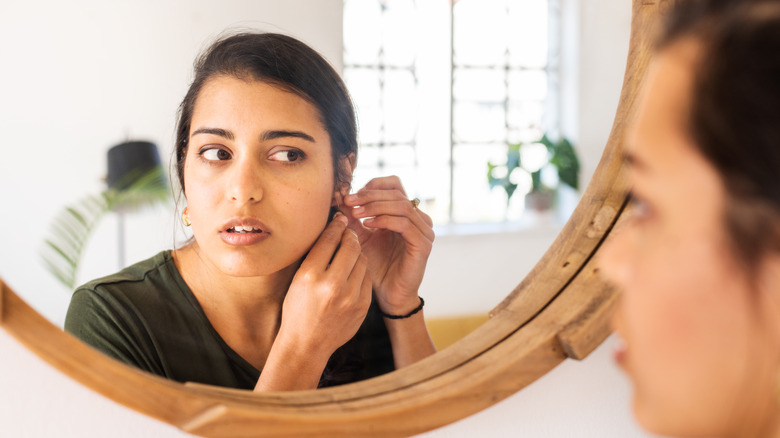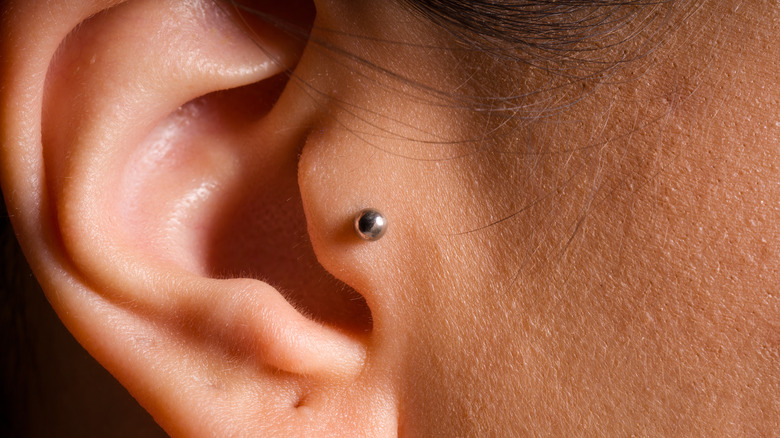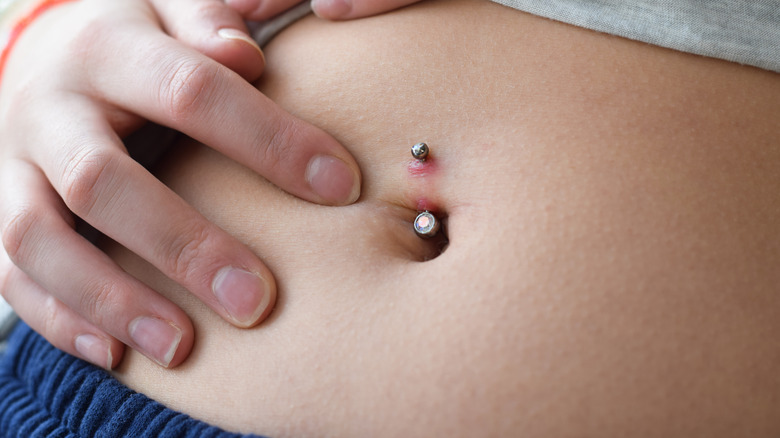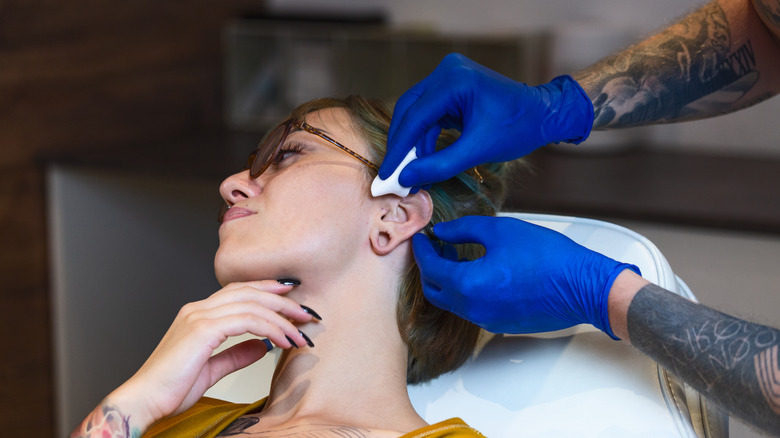Should You Rotate Your New Piercing Or Not? Here Are The Pros & Cons
If you're okay with a little pain, getting a piercing is a fun way to express yourself and add some stabilized bling to your body. But like any form of body modification, piercings come with risks and precautions should be taken. Aftercare is crucial to avoid infections, keloids, and any other complications. This means keeping it clean, not putting pressure on the area, and avoiding touching the new piercing.
When you get a new piercing, it might be tempting to fiddle with it and rotate the jewelry around to clean it. You may even hear from some people that it's okay to rotate it in order to clean it or keep the hole open, while others will strongly advise leaving it alone to avoid infection. But a piercing is a fresh wound that needs time to heal. The only time a piercing should be touched is when it's being cleaned, and this should be done gently. Above all, it's best to speak to a professional piercer or dermatologist about any issues or questions you have regarding your skin.
Why you might rotate a piercing
A piercer might advise rotating the jewelry to prevent it from sticking to the skin while it's healing. This can happen as the body releases fluids that dry up on the skin. Rotating the jewelry might seem helpful to reach all angles of the jewelry while cleaning, but most of the time, it's not a good idea to mess with it. Sarah Lacy, RN, senior manager of piercing research at the piercing studio Rowan explained that twisting an ear lobe piercing after cleaning it may help prevent the hole from closing, but this isn't true for cartilage piercings. "The more you twist and play with a cartilage piercing, the more irritation the cartilage receives, which can cause bumps, keloid scars, and infection," she explained to Self.
If you feel the need to rotate while cleaning, wait a couple of weeks of healing before manipulating the jewelry. Additionally, it's important you don't remove the jewelry to clean it. After all, most piercings can close back up in a matter of hours if the jewelry is removed. Plus, the punctured skin needs to heal around the jewelry so the hole can remain open. However, you can remove or switch the jewelry when fully healed.
That said, be patient and let your body do the healing. Your healing time depends on the piercing's location. For instance, an ear lobe piercing typically takes anywhere from 6-8 weeks to heal, while a nose piercing may heal in 4-6 months.
Rotating the jewelry may cause irritation and disrupt healing
When you get a piercing, the punctured skin needs time to heal around the jewelry. This means it's important to let it be and avoid touching it. You might notice a bit of fluid or blood coming from the piercing that eventually dries and becomes crusted on the skin; this is a normal part of the healing process. According to experts at the Mayo Clinic, rotating the jewelry to clean a fresh piercing could cause irritation. You may also risk pushing back the bacteria, dirt, and crusted bits back into the wound.
"It's incredibly important to avoid manipulating the area and the jewelry, which can cause microtears in the skin and prevent adequate healing," dermatologist Rachel Nazarian told Byrdie. Moving the jewelry around will likely cause pain and discomfort, as the skin is freshly healing. Instead, you can use warm water to gently loosen up any dirt or dried-up fluids.
Keep your piercing clean
Though you might be tempted to fiddle with a new piercing, you should only touch it while cleaning it. You're able to do so without rotating the jewelry. Avoid using a cotton ball or pad, as the cotton pieces may become stuck on the jewelry, causing irritation. Instead, you can spray the area with a saline solution and either let it air-dry or use a paper towel to clean up any fluids.
Your piercer will always emphasize the importance of cleaning your new piercing, and other experts will agree. Board-certified dermatologist Dr. Hadley King told Byrdie, "Piercings need to be cleaned regularly 2-3 times per day while healing." Dr. King went on to explain that not cleaning it regularly can lead to irritation, infection, and scarring. Remember to wash your hands before and after cleaning the piercing. But if you have any concerns, it's best to speak to your piercer and ask them any piercing questions you have.



